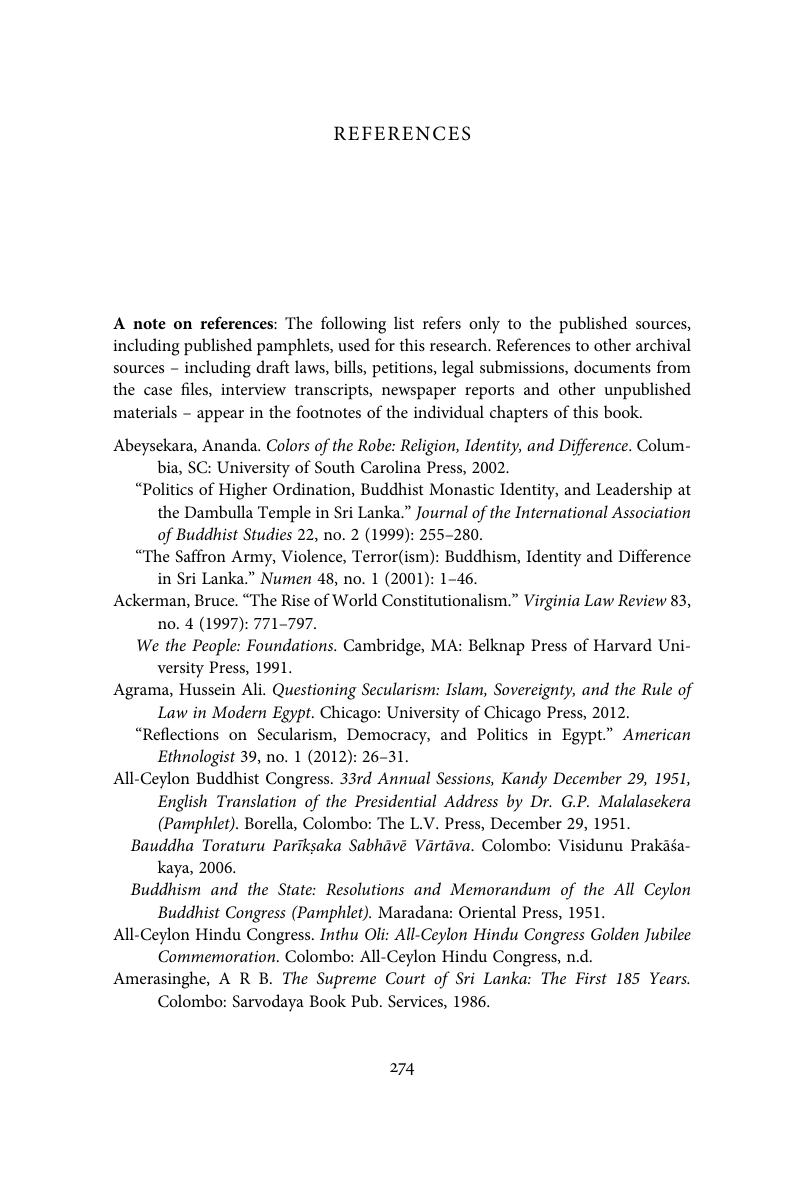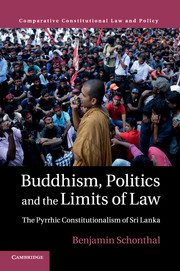Book contents
- Buddhism, Politics and the Limits of Law
- Comparative Constitutional Law and Policy
- Buddhism, Politics and the Limits of Law
- Copyright page
- Contents
- Book part
- A Note on Translation and Language
- Glossary
- 1 Introduction: Religion, Law and the Pyrrhic Constitutionalism of Sri Lanka
- Part I The Past Lives of the Buddhism Chapter
- Part II From Creation to Implementation
- References
- Index
- References
References
Published online by Cambridge University Press: 10 November 2016
- Buddhism, Politics and the Limits of Law
- Comparative Constitutional Law and Policy
- Buddhism, Politics and the Limits of Law
- Copyright page
- Contents
- Book part
- A Note on Translation and Language
- Glossary
- 1 Introduction: Religion, Law and the Pyrrhic Constitutionalism of Sri Lanka
- Part I The Past Lives of the Buddhism Chapter
- Part II From Creation to Implementation
- References
- Index
- References
Summary

- Type
- Chapter
- Information
- Buddhism, Politics and the Limits of LawThe Pyrrhic Constitutionalism of Sri Lanka, pp. 274 - 291Publisher: Cambridge University PressPrint publication year: 2016



